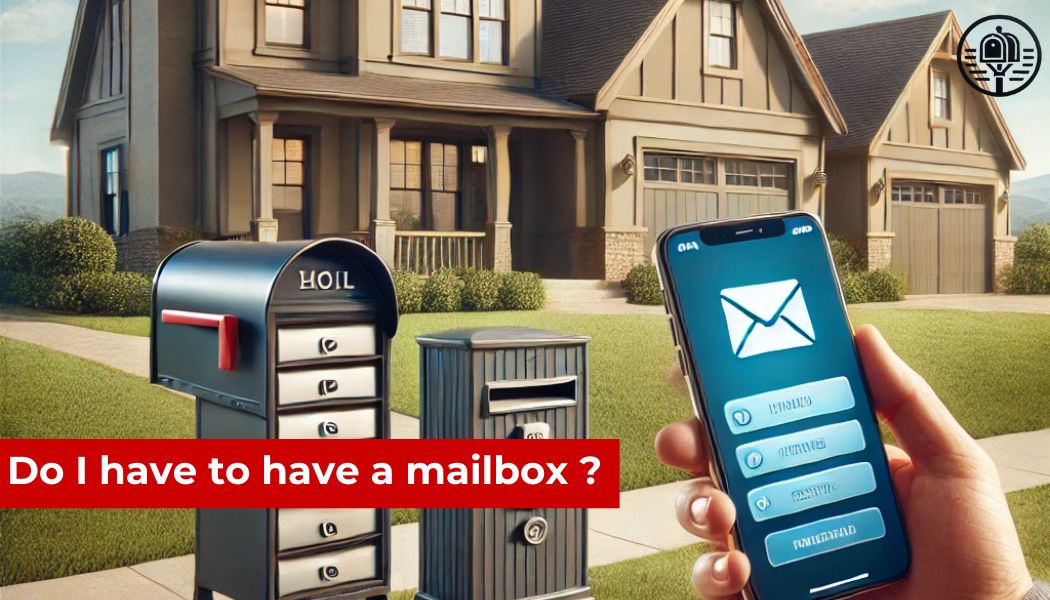Mailboxes have been a staple of mail delivery systems for decades, but not everyone is certain about whether they are legally required. For homeowners, renters, and businesses, the question, "Do I have to have a mailbox?" often arises when considering security, convenience, or personal preference.
This article will explore the necessity of having a mailbox, the alternatives available, and how the rules may vary depending on location and delivery preferences.
Is Having a Mailbox Legally Required?
The legal requirement to have a mailbox depends on where you live and the type of property you own. Understanding the rules can help you stay compliant with postal regulations while making an informed decision.
Residential Properties
For most residential properties in the United States, having a mailbox is not a strict legal requirement. However, it is highly recommended if you want to receive mail directly at your home. Without a mailbox, your mail carrier has no designated location to deliver your letters and packages, which may result in undelivered mail or the need to pick up mail from a local post office.
Businesses
For businesses, the necessity of a mailbox depends on the volume and type of mail received. Many businesses rely on mailboxes or PO boxes to manage correspondence, payments, and packages. In some cases, businesses without a mailbox may risk losing important documents or customer communications.
Apartments and Condominiums
In multi-unit properties like apartments and condominiums, mailboxes are generally required by building management. These mailboxes must comply with USPS regulations and are often part of a shared cluster mailbox system.
Rural Areas
For rural properties served by the United States Postal Service (USPS), a mailbox is essential for Rural Free Delivery (RFD). Without one, residents may need to travel to the nearest post office to collect their mail.
What Happens If You Don’t Have a Mailbox?
Choosing not to have a mailbox can have several consequences, depending on your location and how you manage your mail.
Mail May Be Returned to Sender
Without a mailbox, mail carriers may be unable to deliver your correspondence, resulting in it being returned to the sender.
Inconvenience of Mail Pickup
You may need to regularly visit your local post office to collect your mail, which can be time-consuming and inconvenient.
Missed Deliveries
Packages and important documents that require a secure delivery location may not reach you, causing potential delays or losses.
Security Risks
Leaving mail unattended or using unsecured delivery locations increases the risk of theft or tampering.
Benefits of Having a Mailbox
While a mailbox is not always mandatory, it provides several advantages that make it a worthwhile investment.
Convenience
A mailbox offers a designated spot for mail delivery, saving you from frequent trips to the post office.
Security
Modern mailboxes come with locking mechanisms that protect your mail from theft and tampering.
Compliance
Having a mailbox ensures that you comply with USPS guidelines, especially in areas where mail delivery requires one.
Aesthetics
A well-designed mailbox can enhance your home’s curb appeal and complement its architectural style.
What Are the Alternatives to Having a Mailbox?
If you prefer not to install a mailbox on your property, several alternatives can ensure you still receive mail securely and conveniently.
PO Box
A PO box at your local post office provides a secure and private location for receiving mail. It’s a popular choice for individuals and businesses that need additional privacy.
Parcel Lockers
Parcel lockers are ideal for those who frequently receive packages. They offer secure, weatherproof storage and are often located in convenient, centralized areas.
Digital Mailboxes
Digital mailboxes allow you to manage your physical mail online. Companies like iPostal1 and Anytime Mailbox provide scanning services, so you can view and manage mail digitally.
Mail Slots
A mail slot installed in your door lets mail be delivered directly inside your home, eliminating the need for an external mailbox.
Shared Mailrooms
In apartment complexes and gated communities, shared mailrooms or centralized cluster mailboxes provide secure options for receiving mail.
How to Choose the Right Mail Option
If you’re deciding between a mailbox and an alternative, consider the following factors:
Location: Rural areas often require mailboxes, while urban areas may offer more flexibility.
Volume: Evaluate how much mail you typically receive. Heavy mail users may benefit from secure options like parcel lockers or PO boxes.
Security: For sensitive mail, choose a solution with robust security features.
Convenience: Assess how easy it is to retrieve mail from your chosen option.
Aesthetics: Consider how a mailbox or its alternative fits into your property’s overall appearance.
FAQ: Do I Have to Have a Mailbox?
Q: Is it mandatory to have a mailbox in the United States?
A: For residential properties, it is not mandatory, but it is essential for convenient mail delivery. Rural properties often require a mailbox for RFD.
Q: Can I receive mail without a mailbox?
A: Yes, but you’ll need to pick up your mail from your local post office or use an alternative like a PO box.
Q: Are there regulations for installing a mailbox?
A: Yes, the USPS has guidelines for placement, height, and distance from the curb. Ensure your mailbox complies with these standards.
Q: Can I use a digital mailbox instead of a physical one?
A: Yes, digital mailboxes are a convenient alternative for managing mail online, but they may not accommodate physical packages without forwarding services.
Q: What is the best alternative to a traditional mailbox?
A: It depends on your needs. PO boxes are great for security, while parcel lockers are ideal for frequent package deliveries.
Conclusion
While having a mailbox is not always a legal requirement, it remains a practical and secure solution for most people. Whether you choose a traditional mailbox or explore modern alternatives like digital mailboxes, PO boxes, or parcel lockers, the key is to select an option that meets your needs and lifestyle. Understanding the rules and options available ensures that you stay compliant with postal regulations while keeping your mail secure and accessible.

